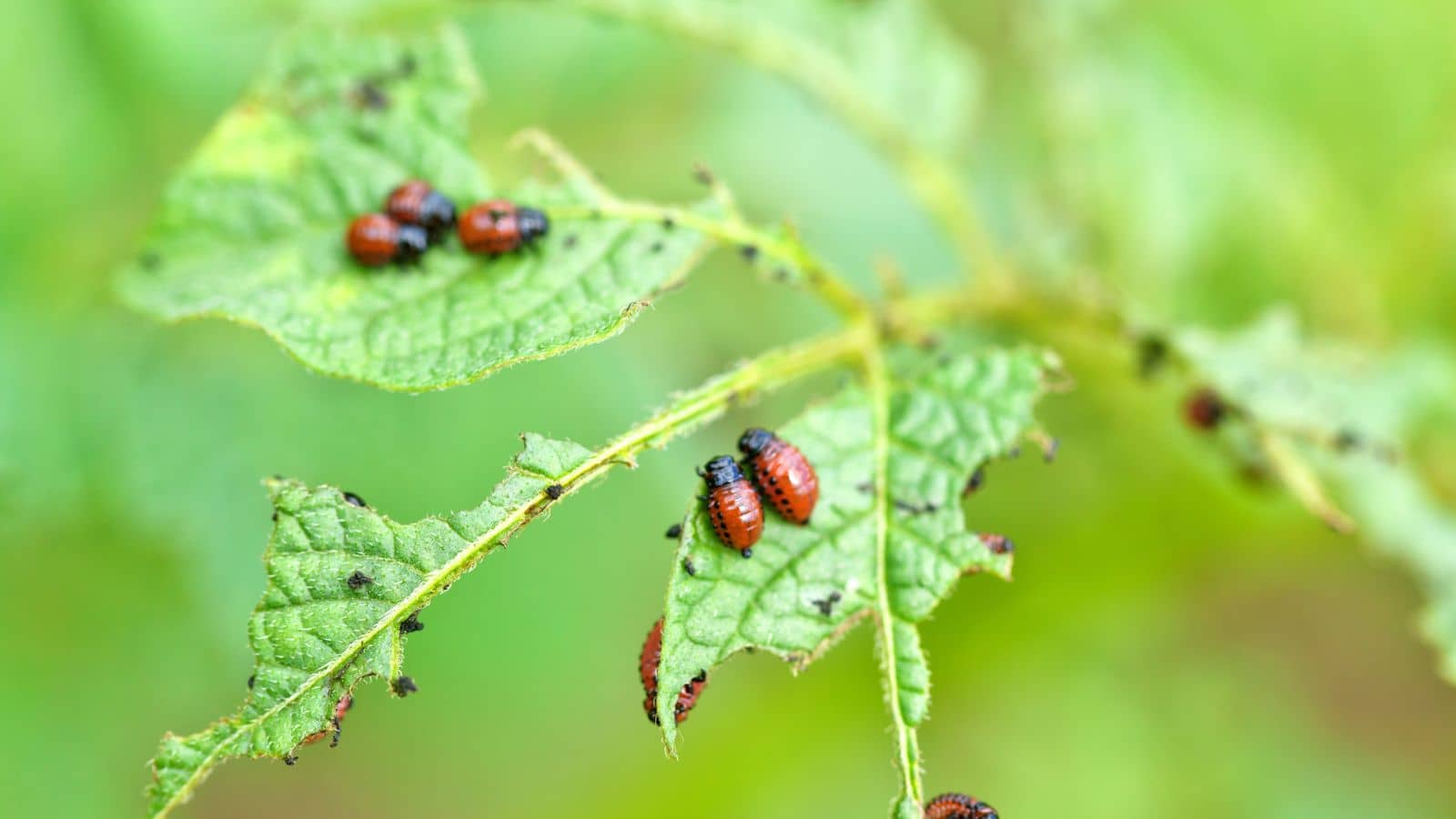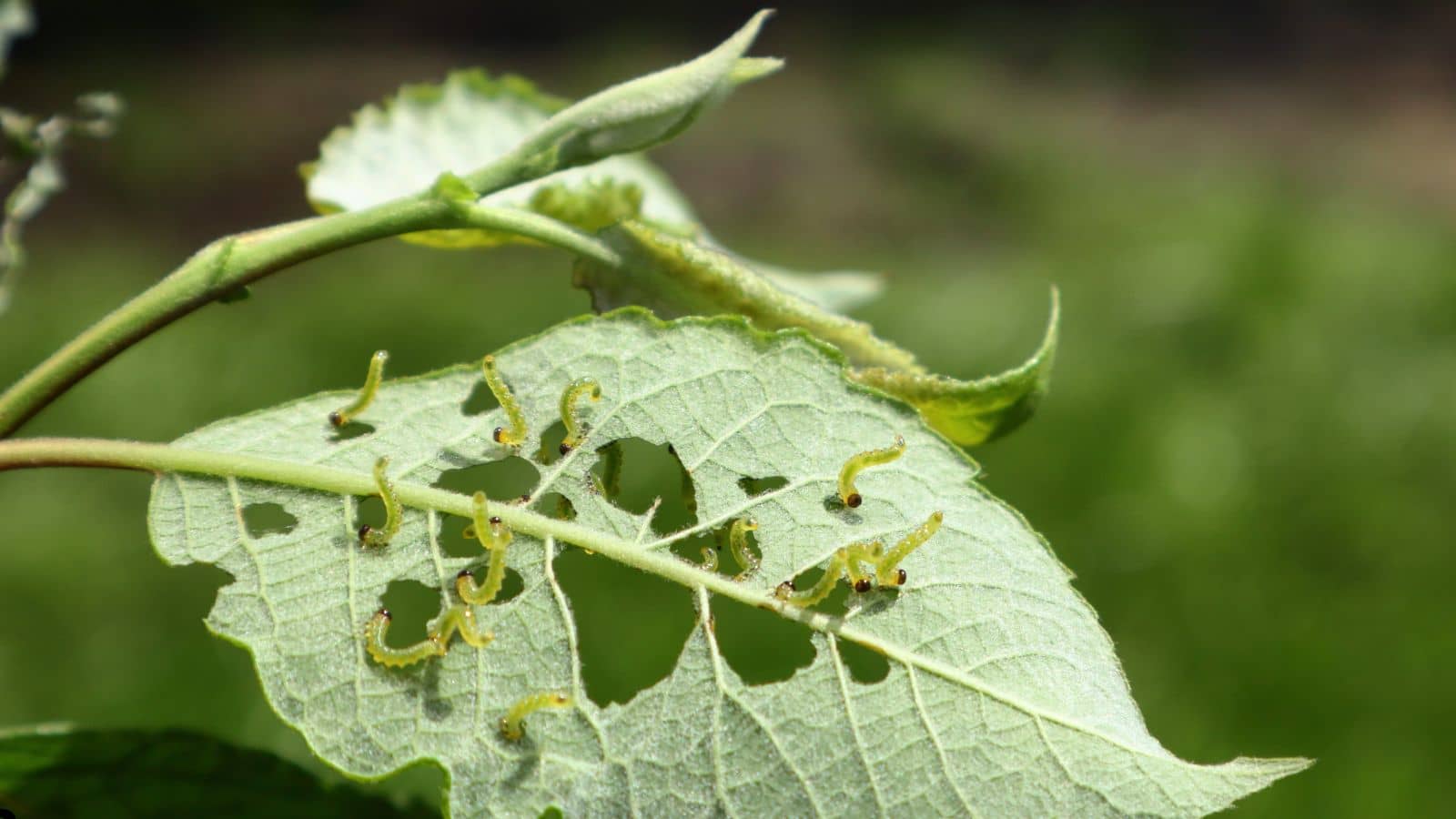AI Plant Pest Identifier: How to Spot, Diagnose, and Deal with Common Plant Pests

Plant Pests can strike anytime—often without warning.
This complete plant pest identifier guide will help you diagnose problems early, recognize the most common culprits, and take smart, safe action.
Be sure to check out StrongEcho Garden’s AI Plant Pest Identifier if you can’t ID your Garden Plant Pests using this guide.
Chapters
AI Plant Pest Identifier [Video Tutorial]
How to Know If Your Plant Has a Pest Problem
Not every yellowing leaf is a red flag, but when it comes to pests, early signs matter. Look for:
- Visible Insects (especially under leaves or around new growth)
- Sticky Residue (a sign of sap-suckers like aphids or scale)
- Fine Webbing (often from spider mites)
- Holes or Chewed Leaves (could be caterpillars, beetles, or snails)
- Stunted Growth or Leaf Drop
Tip: StrongEcho Garden’s Plant Health Identifier makes it easier to log symptoms and catch problems early.
Visual Guide to 20+ Common Garden Pests

1. Aphids
Looks Like: Tiny green, white, or black bugs. Cluster near new growth.
Damage: Curling or distorted leaves, sticky honeydew, ants around plant.
DIY Fix: Spray with diluted dish soap or neem oil.
2. Spider Mites
Looks Like: Microscopic; leave fine webs under leaves.
Damage: Bronze speckling, dry or crumbling leaves.
DIY Fix: Rinse foliage and apply insecticidal soap.
3. Fungus Gnats
Looks Like: Tiny black flies hovering near soil.
Damage: Wilting, root damage in seedlings or overwatered plants.
DIY Fix: Let soil dry out. Use sticky traps or mosquito bits.
4. Whiteflies
Looks Like: Tiny white moth-like insects. Fly up when plant is disturbed.
Damage: Yellowing leaves, sticky sap, poor growth.
DIY Fix: Yellow sticky traps + neem oil.
5. Thrips
Looks Like: Tiny slivers or threads on leaves. Hard to spot.
Damage: Silvery streaks or spots, leaf deformity.
DIY Fix: Prune affected areas, apply spinosad.
6. Mealybugs
Looks Like: White cottony clumps in leaf joints.
Damage: Sticky sap, distorted growth.
DIY Fix: Dab with alcohol-soaked Q-tip. Rinse thoroughly.
7. Scale Insects
Looks Like: Small bumps (white, brown, or black) stuck to stems or leaves.
Damage: Leaf yellowing, stunted growth, sap residue.
DIY Fix: Scrape off manually. Use horticultural oil.
8. Caterpillars
Looks Like: Green, brown, or striped worm-like larvae.
Damage: Large holes in leaves, missing chunks.
DIY Fix: Hand-pick. BT (Bacillus thuringiensis) is safe for food crops.
9. Leaf Miners
Looks Like: White squiggly trails inside leaves.
Damage: Cosmetic mostly, but can stress the plant.
DIY Fix: Remove affected leaves. Cover crops with row covers.
10. Slugs & Snails
Looks Like: Slimy bodies, trails on soil or leaves.
Damage: Ragged holes in leaves, especially at night.
DIY Fix: Beer traps, crushed eggshell barriers.
11. Beetles
Looks Like: Varies—Japanese beetles, cucumber beetles, etc.
Damage: Skeletonized leaves, chewed flowers.
DIY Fix: Row covers + hand removal.
12. Root-knot Nematodes
Looks Like: Roots swell with knots or galls (underground).
Damage: Wilting despite watering, stunted growth.
DIY Fix: Solarize soil or plant resistant varieties.
13. Earwigs
Looks Like: Brown, pinchers on tail, fast-moving.
Damage: Ragged holes in leaves, especially seedlings and flowers.
DIY Fix: Roll up damp newspaper at night to trap them.
14. Cutworms
Looks Like: Fat, curled gray/brown caterpillars hiding in soil.
Damage: Seedlings cut at base overnight.
DIY Fix: Use collars around stems. Remove manually at dusk.
15. Grasshoppers
Looks Like: Large jumping insects, green or brown.
Damage: Large irregular holes in foliage.
DIY Fix: Apply kaolin clay spray. Encourage natural predators.
16. Cabbage Worms
Looks Like: Green caterpillars blending with leaf veins.
Damage: Big bites in brassicas (cabbage, kale).
DIY Fix: Pick off by hand. BT spray works great.
17. Root Aphids
Looks Like: Small, white/yellow insects around roots.
Damage: Wilting, poor growth despite watering.
DIY Fix: Neem drench + soil replacement.
18. Pill Bugs (Roly-Polies)
Looks Like: Armored, gray pill-shaped bugs that curl up.
Damage: Usually decomposers, but can damage seedlings.
DIY Fix: Increase drainage. Remove debris.
19. Springtails
Looks Like: Tiny white jumping bugs in soil.
Damage: Harmless in small numbers; can indicate soggy soil.
DIY Fix: Let soil dry out. Improve airflow.
20. Tobacco Hornworms (and Tomato Hornworms)
Looks Like: Large green caterpillars with a “horn” on the tail.
Damage: Strip tomato and pepper plants overnight.
DIY Fix: Hand-pick. Encourage parasitic wasps.
21. Squash Bugs
Looks Like: Flat, shield-shaped brown bugs.
Damage: Wilted vines, yellow spots on squash or pumpkin leaves.
DIY Fix: Remove eggs under leaves. Neem or pyrethrin spray.
22. Broad Mites
Looks Like: Microscopic – damage includes twisted, shiny, brittle leaves.
Damage: New growth distorted or fails to open.
DIY Fix: Isolate and treat with miticide.
23. Weevils
Looks Like: Beetles with long snouts.
Damage: Notches in leaf edges. Larvae damage roots.
DIY Fix: Diatomaceous earth around base. Nematodes for larvae.
24. Ants (Farming Insects)
Looks Like: Ants moving up and down plant stems.
Damage: Don’t eat plants directly but protect aphids/mealybugs.
DIY Fix: Control sap-feeders + use barriers to block trails.
Pest Damage vs. Other Plant Problems
| Symptom | Likely Cause | What to Do |
|---|---|---|
| Yellowing leaves | Overwatering or pests | Check soil + inspect for bugs |
| Sticky leaves | Aphids or whiteflies | Look for insects under leaves |
| Brown tips | Low humidity or salt build-up | Flush soil and mist |
| White fuzz on soil | Fungus or overwatering | Let dry, improve airflow |
Pro Tip: Use StrongEcho Garden’s Plant Pest ID Tool to narrow down the cause.
Smart DIY Plant Pest Control Options

- Neem oil spray (weekly)
- Dish soap + water (for soft-bodied insects)
- Diatomaceous earth (for crawling insects)
- Yellow sticky traps (gnats, whiteflies)
- Companion planting (basil, marigold, nasturtiums)
- Insect netting and physical barriers
Always test a small section first—some treatments can damage sensitive leaves.
Natural Pest Prevention Habits
- Inspect plants weekly, especially new ones.
- Quarantine new plants for 7–10 days before adding them to your collection.
- Water correctly—avoid soggy soil.
- Keep foliage clean—dust and grime can attract pests.
- Encourage beneficial insects like ladybugs and lacewings.
What Now? Your Next Steps to a Pest-Free Plant Life
If you’ve made it this far, you’re already ahead of the game. Spotting plant pests early can mean the difference between a thriving green space and a garden graveyard. But identification is only step one—success comes from a solid, proactive plan.
Whether you’re just noticing sticky leaves on a pothos or you’re mid-battle with tomato hornworms, you’re not alone. Every grower—novice or seasoned—deserves tools that work, support that’s real, and guidance that’s grounded in nature.
FAQ: Plant Pest Identification
How do I know if my plant has a pest or just needs water?
Look for signs beyond leaf color. Pests often cause sticky residue, visible bugs, webbing, or distorted new growth. A thirsty plant typically droops without damage patterns.
What’s the best way to ID a pest if I can’t see it clearly?
Use a phone macro lens or magnifying glass. Focus on damage patterns too—webbing = mites, honeydew = aphids or whiteflies, trails in leaves = miners. Or snap a photo and share it with the StrongEcho Garden ID team.
Are DIY pest treatments safe for edible plants?
Yes—many natural treatments like neem oil, insecticidal soap, and BT spray are safe for vegetables and herbs when used correctly. Always check labels and avoid synthetic chemicals unless absolutely necessary.
Why do pests keep coming back even after I treat them?
Common reasons:
- Residual eggs or larvae weren’t eliminated
- Poor airflow or overwatering attracts pests again
- Nearby untreated plants (indoor or neighbor’s) act as reservoirs
Try a multi-week treatment plan + habitat change, not just a one-time spray.
Should I isolate a plant with pests?
Absolutely. Quarantining the affected plant prevents spread—especially indoors. Keep it separate for at least 10 days while treating.
What’s the most beginner-friendly pest solution?
Start with yellow sticky traps, neem oil spray, and regular leaf checks. These handle 80% of common pests and are safe for most plants.
Create more and better content
Check out the following resources and Grow!